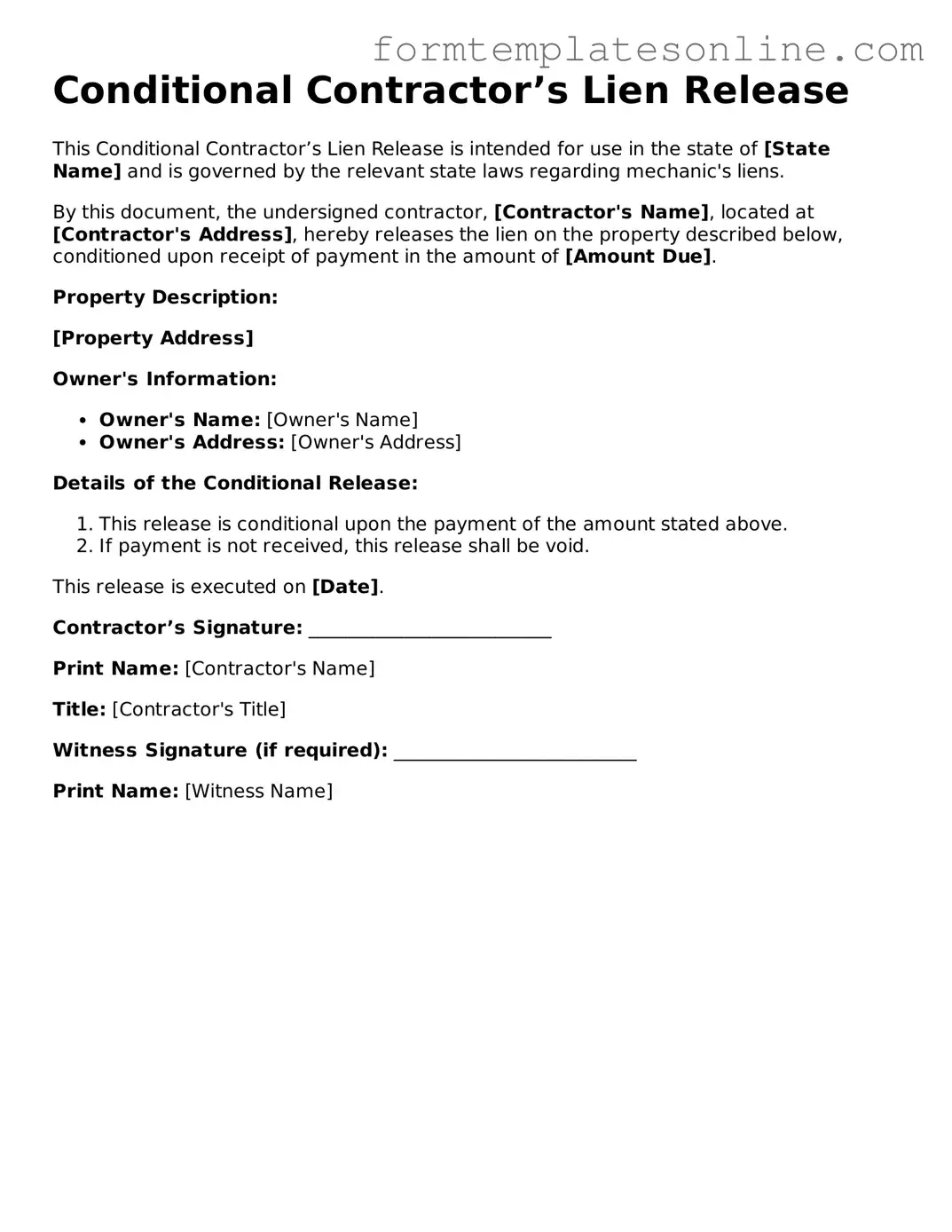Attorney-Approved Conditional Contractor’s Lien Release Template
The Conditional Contractor’s Lien Release form serves as a crucial document in construction projects, allowing contractors to release their lien rights conditionally upon receiving payment. This form protects both the contractor and the property owner by ensuring that the contractor can only claim a lien if payment is not made as agreed. Understanding this form is essential for navigating the complexities of construction law and securing financial interests.
Customize Conditional Contractor’s Lien Release
